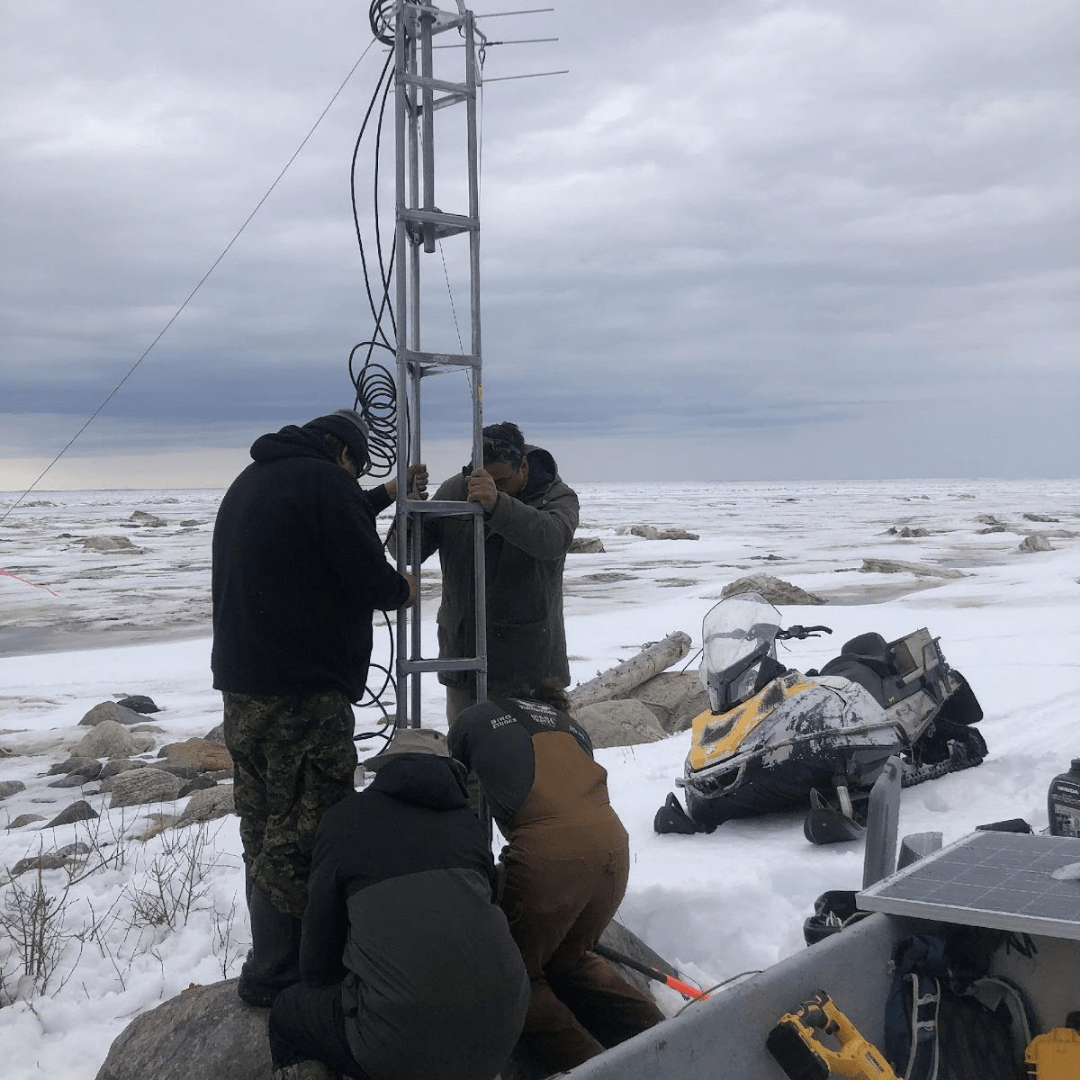Lucas Berrigan, Birds Canada Motus Program Coordinator – Atlantic Region, and Erica Geldart, Birds Canada Motus Coordinator – Outreach and Analytics
This spring, Birds Canada was proud to not only be invited back to both Cree territory along the shores of Wiiniibek (James Bay) and Nunatsiavut in northern Labrador, but also for the first time to NunatuKavut in southern Labrador, to install new Motus Wildlife Tracking System stations. This work integrates two major five-year initiatives that Birds Canada is embarking on: Science in the North and Motus on the Move.
By expanding the Motus network in collaboration with Indigenous communities in northern Canada, we are co-creating new opportunities to study animals on the move through, and within their territories. Motus can help show where important harvested species, like geese, are coming from and going to, as well as clues to the movements of other species of cultural or community interest. Motus and other tracking technologies also provide useful indicators of where and how northern ecosystems are changing with climatic shifts and create novel learning opportunities in schools that can connect them with communities elsewhere. Read this article by the CBC to learn more.
We teamed up with Felix Boulanger from the Eeyou Marine Region Wildlife Board, Sandford Diamond from the Cree Trappers Association, Michelle Saunders from the Nunatsiavut Government, Sara Pearce-Meijerink from the NunatuKavut Community Council, and other local experts in some stunning landscapes and logistically challenging scenarios.

Birds Canada’s Lucas Berrigan and Eeyou Marine Region Wildlife Board’s Felix Boulanger, Bernard Diamond, and Joel Stephen set up a Motus station at Consolation Point, QC.
Conservation technology can be very finicky! Pairing that with delayed shipping, time-sensitive ice melt conditions, and choice of transport could mean the difference between success and failure. It makes for an adventurous and innovative working environment!
Our collaborators in each community were exceptional, and as a result, we were able to deploy six new stations in Waskaganish and Consolation Point QC, Dog Island, Cartwright, Port Hope Simpson, and English Point NL. See if you can find them on this map!
We have been inspired by the shared appreciation for and enthusiasm to understand and conserve birds in the communities to which we were invited.
In addition to setting up new Motus stations, we met with local community members to discuss which animals are of most interest to them to monitor, the knowledge gaps they would like to address, and to identify where Birds Canada may be able to provide additional support. While we were in Labrador, we even got the chance to engage with community members across the province over the CBC radio– have a listen here!
Our new five-year Science in the North program is all about listening to Northern community conservation and monitoring interests, and supporting this with our existing technology, monitoring experience, and working together towards conservation outcomes. With a geographic focus on the Labrador and James Bay regions, Motus has been a great conservation tool to help advance these conversations.

Birds Canada Motus Coordinator Erica Geldart, wildlife photographer and Citizen Scientist Vernon Buckle, Birds Canada Motus Program Coordinator Lucas Berrigan, NunatuKavut Community Council Wildlife Biologist Sara Pearce-Meijerink, NunatuKavut Community Council Wildlife Stewardship Technician Kayla Brown, and Environment and Climate Change Canada Wildlife Biologist Regina Wells next to the Motus station at English Point, NL.

A Snow Bunting that was Motus-tagged in Southern Ontario in winter 2024. Photo: Samuelle Simard-Provençal
Already, a Snow Bunting (also referred to as Snow Birds), tagged by the University of Windsor in southern Ontario this past winter, was detected at Consolation Point QC in May. This makes us optimistic that these new Motus stations will increase our possibilities of tracking culturally important, nomadic species like Snow Buntings to-or-from their breeding grounds – and be helpful in conserving other bird species across the North.

